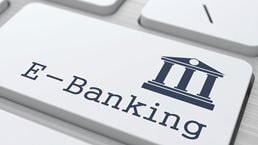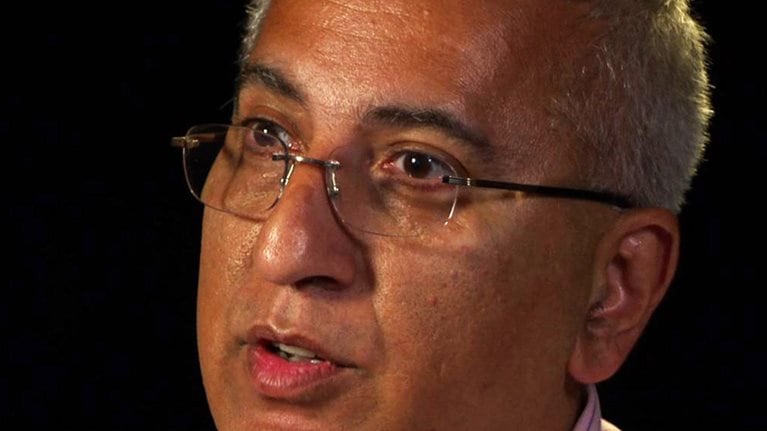The digital transformation of any enterprise is a herculean task requiring a willingness to embrace cultural change, the ability to immerse the entire organization in the customer journey, and a total commitment to digitize to the core. DBS Bank Chief Information Officer David Gledhill shares his insights on DBS’s digital transformation with McKinsey’s Vinayak HV, a partner in the Singapore office.
DBS’s digital transformation
When we were thinking about the digital transformation of DBS, we saw three key elements as vitally important. One is how we digitized to the core. We saw many companies put on digital lipstick, some kind of front-end system, and a fancy website.
The second was: how do we embed ourselves in the customer journey and push customer-journey thinking throughout the organization? The third was changing the culture of the company to make it feel and operate like a 22,000-person start-up. These last two points were just as important as the first one. If you focus purely on digital and forget the organizational change you have to make, you won’t get very far.
Digital to the core
Digital to the core means you have to have a rock-solid foundation of core systems that you're going to build on. In fact, we spent the first five years of our transformation putting in place common platforms that are strategic across all of our locations. Once you do that, you can start to think about how you really start to accelerate and become nimble, accelerate speed to market, and increase your cadence.
And we said to ourselves, “If we want to be digital to the core and act like a technology company, it’s best we learn from the technology greats, figure out how they do it and see if we can’t bring in some of those things internally.”
Stay current on your favorite topics
So we started to learn how the best technology organizations operate, how they build technology, and how they move quickly. We learned a few things along the way. The first thing is that most of these technology companies started much like where we are today. They had big systems. They were hard to shift, and they went through this whole transformation agenda, and along the way, built a load of tools that we thought we could also use. So if they’d done it, we could do it.
We also learned about their culture and which cultural elements we could take on board and shift. So it wasn't just sharing the latest business article. It was really going into how these companies are engineered.
Our rallying call: Becoming the “D” in GANDALF
The first letters of Google, Amazon, Netflix, Apple, LinkedIn, and Facebook together spell GANALF. That was missing a D, and we, as DBS, fortunately have a D. So, our mission became how to become the D in GANDALF.
Now that might sound a little cheesy, but in actual fact, it was an amazing rallying call to our people. It had a bigger impact on our technology people and many other people in the organization than anything else we’ve done, because it started to make them think about what was possible. It got them to think, “We’re not acting like another bank, and here’s how we really start to transform ourselves like a technology company.”
We came up with five key elements that had to change. One was to shift from individual projects that need approvals, subcommittees, and things like that, to giving the freedom to a group of people to operate like a platform.
Then you fund the platform, look at what outcomes that platform can give, and set it free. With that, you can really start to practice agile at scale.
Third, you have to really think about organizational constructs: How does DevOps work? How do you build infrastructure engineering? How do you build business-ops teams, and how do they interact?
You then have to think about how you engineer the technology and how you build for modern systems that are scalable, elastic, and made for experimentation.
Finally, how do you automate everything from testing through deployment to increase cadence?
So those five elements became the mission that we’re on and the delivery pipeline that we started to build.

Strategic choices for banks in the digital age
Our outcomes
The outcomes of our transformation are speed to market, scalability, experimentation, and all of those things that you see in these technology companies.
One successful example would be a bank offering we did in India. We were trying to figure out how to scale our presence in India, where we had very few branches. So how do you attack a market of a billion people? We came up with a mobile-only offering.
Now first of all, we had no clue how it was going to work. I understand how to create a mortgage product and sell it, and I know how to build systems for it. But how do you build a mobile-only bank in India and attract customers at scale? No idea.
So we had to learn as we go, which means we had to iterate very fast. We were actually pushing out releases weekly into the app store.
So, test and learn, test and learn, test and learn was the only way we could get into a brand-new market with a product that we had simply no idea how it was going to operate when we launched it.
A scorecard for the mission
Transformation could consume every hour of every employee in the company for the next five years. Obviously, we wouldn’t make any money and that wouldn’t be a good outcome.
So you have to balance it. And the way we balance it is through group scorecards, which really drive everything we do and clearly indicate to people the amount of time we expect them to spend on certain areas.
The top part of the scorecard is all financial metrics, customer metrics, shareholder value-add, and revenue generation. The middle part is where the core of the digital transformation comes in, and we ascribe 20 percent of the value of the scorecard to this, which is then used to drive compensation for the company. Below that we have the strategic initiatives we need to get done, and that’s another 40 percent. So big transformations like automated lending into India or how to transform future-ready employees, go in that box.
We obsess over those scorecards and critique each other’s scorecards. It’s a collective and collaborative thing to come up with each person’s scorecard and the weightings of those. Once that’s set for the year, it’s very clear what everyone’s mission is.
Advice for others on this journey
I’d say you really need to boil down the essence of what your mission is and what the problem is that you’re trying to solve.
Once you're clear on that, the rest starts to become very easy. And I would not necessarily focus on the pet projects. Focus instead on what gets the business moving, what gets speed to market faster, what gets journey thinking embedded in the organization, those sorts of things.
If you can crystallize that down to a message that everybody can grasp on a single page, then you have something very powerful that you can start to push on.When we looked at customer service, for example, we came up with RED: Respectful, Easy to deal with, Dependable. It was very clear, something people could act on, and that drove massive change through the organization. When we thought about how we wanted the business to digitize, we came up with a very simple framework of Acquire, Transact, Engage—customers Acquire digitally, Transact digitally, Engage digitally—and drove metrics around that.
Without those clear missions, we’d have had people going in all sorts of different directions.
Lessons learned
We learned you have to embed this thinking into the management fabric of the company. If you just say you want customer journeys, that's not going to drive results. If you embed that into the KPIs and scorecards that everybody’s measured by—and make sure it’s continually reinforced from the CEO and the leadership team down—then you get results and can shift and move.
The other learning for us, and perhaps the thing that was most difficult, was that we had to learn how to learn. What I mean by that is, we understand banking, and we understand credit and market risk and how to build great mortgage systems. But when you get into this new digital space of experimenting with ecosystems, with start-ups, with launching a brand-new product that nobody’s ever tried in a new market, you get lots of things wrong.
That was hard for us to accept, actually. So you’d have these meetings and people would ask, “How could we possibly not have known that?” Well, it’s an experiment. Of course, we don’t know.
So this learning that it’s okay to experiment, that many of the experiments we try will fail, and for everybody to accept that and actually treasure it was a very difficult change to make.



